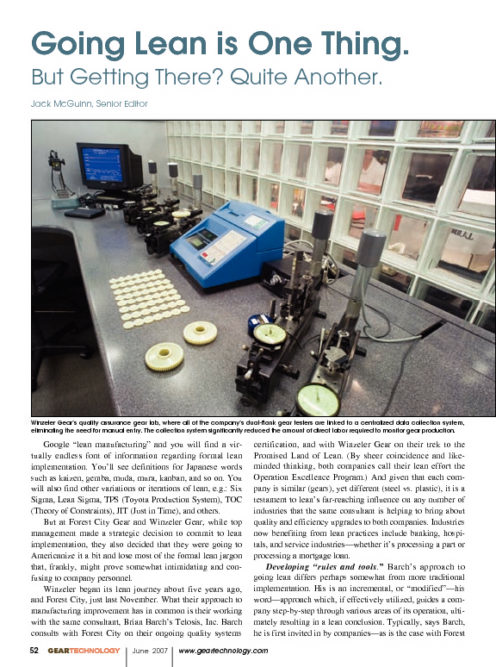The Skinny on Lean Manufacturing
See also Going Lean is One Thing...
While universally known as a Japanese “invention” that was popularized by Toyota, lean in fact traces its roots to the work of post-World War II American occupation forces in Japan. Utilizing the War Department’s Training Within Industry (TWI) learning and training programs to assist Japan in regaining their industrial footing, the TWI programs included standard work job instruction and process improvement job methods. Instituted simultaneously with these programs were a number of statistics-based methodologies championed by the quality gurus W. Edwards Deming and Joseph M. Juran. As early as the 1950s, these programs and methodologies were at the heart of what is called Japan’s kaizen (continuous improvement) revolution.
 Robert “Doc” Hall is professor emeritus of operation management at Indiana University’s Kelley School of Business, a founding member of the Association for Manufacturing Excellence (AME), and has authored six books on lean principles. According to Hall, the term “lean” was unknown until the late 1980s. Even then, there was some overlapping of terms.
Robert “Doc” Hall is professor emeritus of operation management at Indiana University’s Kelley School of Business, a founding member of the Association for Manufacturing Excellence (AME), and has authored six books on lean principles. According to Hall, the term “lean” was unknown until the late 1980s. Even then, there was some overlapping of terms.
“First, JIT was the nickname originally given by Toyota for TPS, and it was used in the 1980s until Womack’s book (The Machine That Changed the World: The Story of Lean Manufacturing, by James P. Womack, Daniel T. Jones and Daniel Roos) coined the term ‘lean,’ which still is not a good descriptor,” he says. “Lean equals American understanding of Toyota Production System. Six Sigma originated at Motorola as a very techniques-oriented quality program. The other terms represent some companies’ attempt to blend everything together into ‘their’ program, amid much misplaced debate on the differences.
“The truth is that no one understands the thinking from just reading. They have to live it and think about it to begin to ‘get it’—a totally different philosophy of work, and even of what a company is. That’s why Toyota is reluctant to discuss it with the uninvolved.”
Indeed, in any conversation of lean, the need to change a company’s culture—from the most senior management to the shop floor—is a bedrock constant. Esprit de corps, unity of purpose, everyone pulling from the same end of the rope—call it what you will, it is an absolute necessity for a company to begin even thinking about lean.
“Culture is the aggregate of all policies and practices that create the milieu of work,” says Hall. “It’s more than just attitude; it’s the consistency—or lack of it—between what is expected of people in improving processes, and the systems-and-reward actually used by the company. Culture today is sometimes referred to as a company’s DNA.”
For Hall, rethinking or reinventing what a particular company is goes way beyond a mission statement. It’s really all about people. And he believes that is one area where companies contemplating or implementing lean fall short.
“When you say you’re going lean, that really is ultimately a change in how you actually think about what the company is, because what you have to do is develop the people, and the company really is the people,” he says. “There’s a favorite saying, ‘Our people are our most important asset.’ But people are not an asset; they are the company.”
Lastly, Hall warns of impending lean implementation failure if a company’s CEO and/or owner is not completely behind the effort. Not just talking the talk, but doing the walking and heavy lifting as well.
“They underestimate the degree to which the company must eventually change and think of it as a miraculous cost-cutting program in which they need be only minimally involved. Sort of, ‘While you’re up, fetch me a lean program.’”
Bottom line, effective lean implementation is predicated not only upon top management’s desire to get lean, but upon its day-to-day understanding of its workings, as well. Hall—by way of jazz great Louis Armstrong—probably puts it best.
“Satchmo Armstrong had a great saying—‘Man, if someone has to explain it to you, you don’t dig nuthin’.”
—Jack McGuinn, Senior Editor







